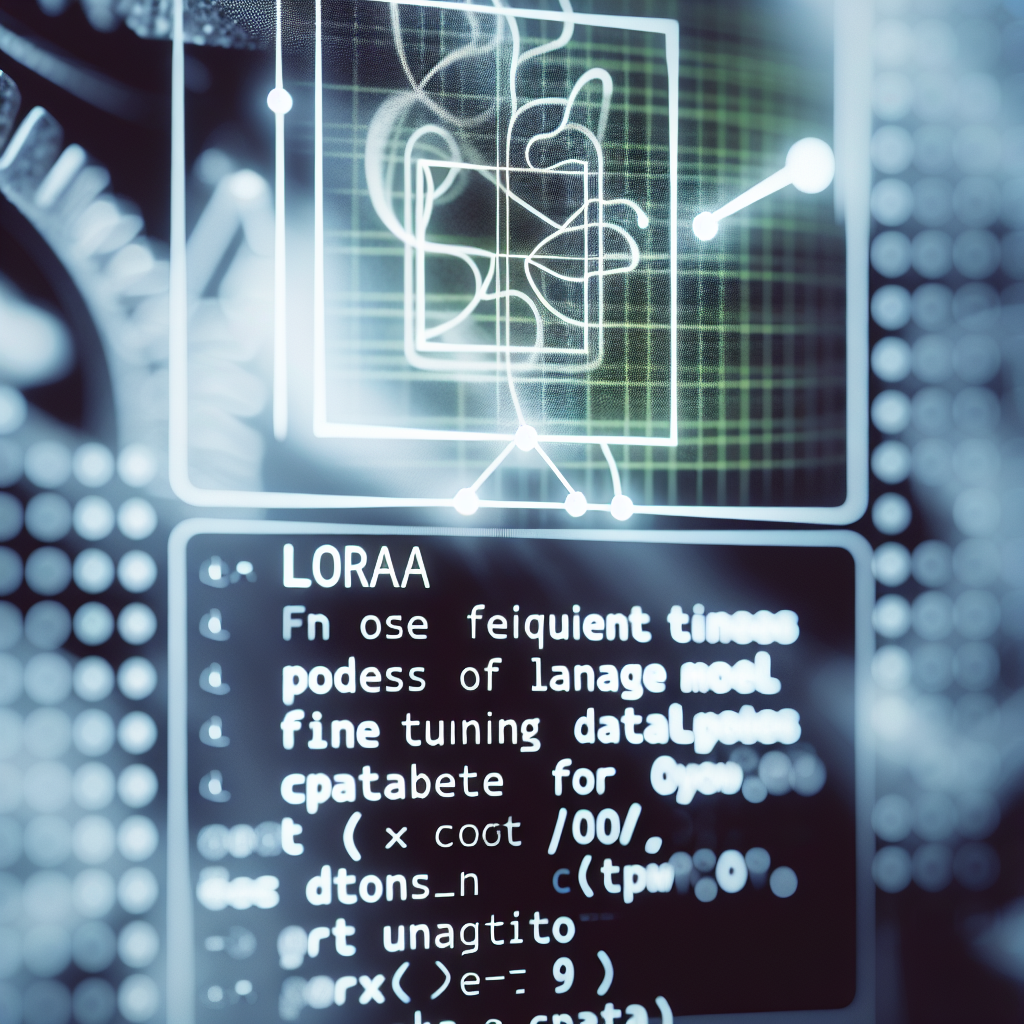Fine-tuning large language models (LLMs) using LoRA (Low-Rank Adaptation) offers a cost-effective and efficient way to customize models for specific tasks with your own datasets. This guide explains how to leverage LoRA for personalized model training, enabling you to optimize LLM performance without extensive computational resources. Let’s dive into the details of tailoring LLMs for your unique needs.
Understanding LoRA and Its Benefits for Custom LLM Fine-Tuning
LoRA (Low-Rank Adaptation) is a cutting-edge technique designed to adapt large pre-trained models efficiently by introducing low-rank matrices into existing weights during fine-tuning. Unlike traditional methods that update all parameters, LoRA updates only a small subset of parameters, significantly reducing memory and computation costs.
When fine-tuning an LLM on a custom dataset, traditional retraining can be prohibitively expensive and time-consuming, especially with models containing billions of parameters. LoRA simplifies this process by injecting trainable low-rank matrices into selected layers, allowing the model to adapt to specialized data without altering the core weights drastically.
Some key advantages include:
- Efficiency: Reduced parameter updates mean faster training and lower hardware requirements.
- Flexibility: Easy to integrate with existing frameworks like Hugging Face Transformers.
- Performance: Maintains the pretrained model’s capabilities while specializing on new datasets.
Implementing LoRA for Custom Dataset Fine-Tuning
The process of fine-tuning an LLM using LoRA involves several steps, which can be summarized as follows:
- Preparing Your Custom Dataset: Ensure your dataset is formatted correctly, typically as a text corpus aligned with your target task (e.g., Q&A, summarization). Clean and preprocess it for optimal results.
- Setting Up the Environment: Use popular deep learning frameworks such as PyTorch, along with libraries like Hugging Face Transformers and PEFT (Parameter-Efficient Fine-Tuning) to facilitate LoRA integration.
- Applying LoRA: Leverage PEFT’s LoRA modules to modify the existing model architecture. When loading your pretrained model, wrap it with LoRA configurations specifying the layers to adapt and the rank of low-rank matrices.
- Fine-Tuning: Train the model on your custom dataset, monitoring performance metrics and adjusting hyperparameters such as learning rate and batch size as needed. Due to LoRA’s efficiency, fine-tuning often completes more quickly than traditional methods.
- Evaluation and Deployment: After training, evaluate the model’s performance on validation data. Once satisfied, deploy the fine-tuned model for your specific application.
By following these steps, you can achieve highly customized language models tailored specifically to your dataset, ensuring better performance on your target task without incurring massive computational costs.
Conclusion
Fine-tuning your own LLM with LoRA on a custom dataset offers an accessible and efficient path to specialized AI models. By understanding LoRA’s benefits and following proper implementation steps, you can significantly enhance model performance tailored to your needs with minimal resource expenditure. Embrace this approach to unlock powerful, personalized AI solutions.
